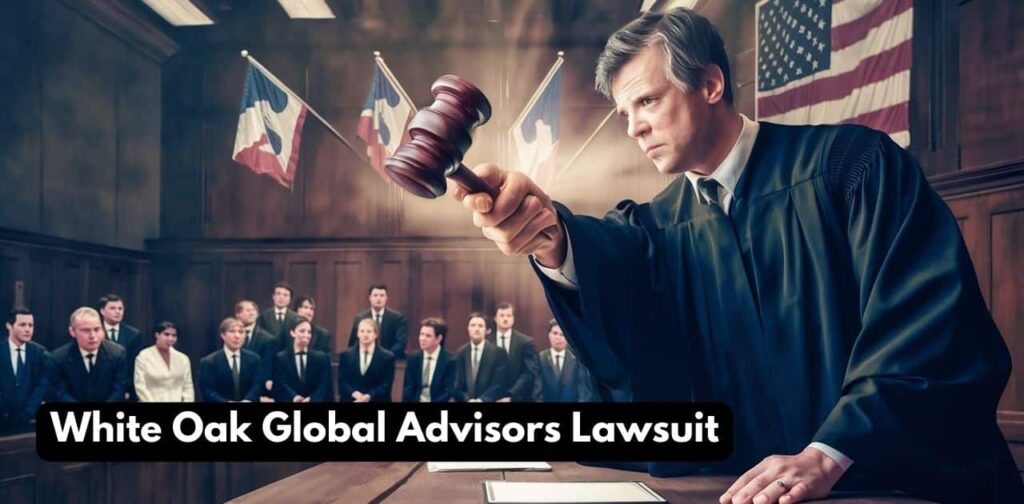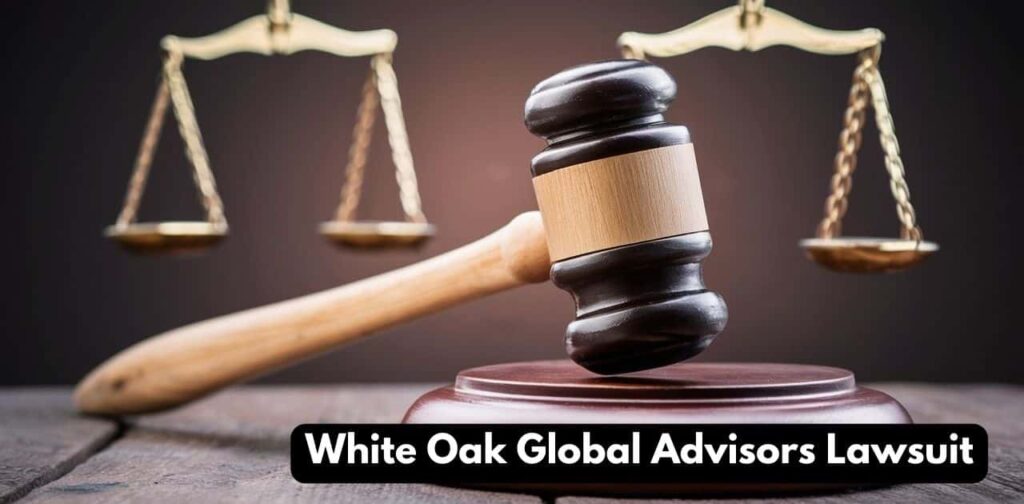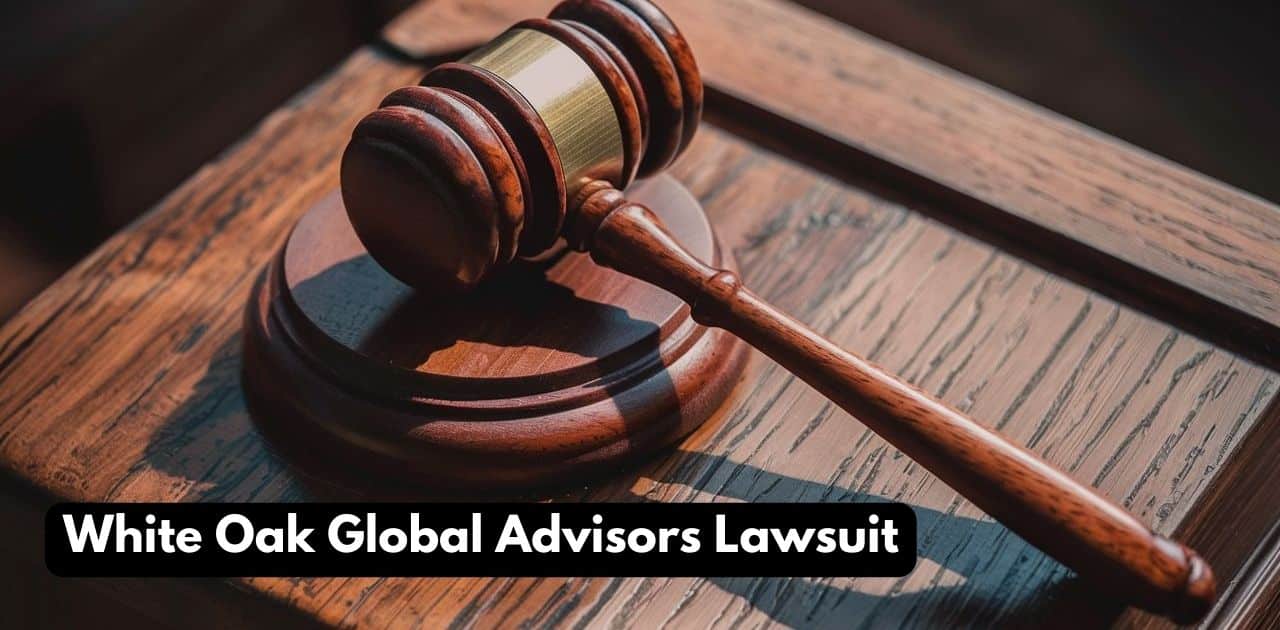The world of high finance is no stranger to controversy, but the White Oak Global Advisors lawsuit has sent shockwaves through the investment community. This comprehensive guide delves deep into the eye of the storm, unpacking the allegations, legal proceedings, and potential ramifications for clients and stakeholders alike. Brace yourself as we peel back the layers on one of the most talked-about financial scandals of recent times.
What is White Oak Global Advisors?
White Oak Global Advisors is an investment management firm that prides itself on providing tailored financing solutions to middle-market companies across various industries, including technology, healthcare, real estate, and energy. Founded in 2007 and headquartered in London, with offices in New York City and Luxembourg, the firm has established a global footprint, managing over $11 billion in assets as of March 2021.
The company’s investment strategies are designed to achieve positive risk-adjusted returns through a blend of liquid and illiquid credit options, underpinned by active portfolio management and in-depth fundamental credit analysis. White Oak Global Advisors boasts expertise in sectors such as structured credit, event-driven investing, long-short credit, private credit, and distressed debt, catering to a diverse client base that includes family offices, endowments, foundations, banking groups, and private and public retirement benefits.
The White Oak Global Advisors Lawsuit Allegations Explained

At the heart of the White Oak Global Advisors lawsuit lie several concerning allegations that have sent ripples through the investment world. The plaintiffs, purportedly clients adversely affected by the firm’s actions, have leveled the following key accusations:
- Improper handling of client funds: Perhaps the most damning allegation, the plaintiffs claim that White Oak Global Advisors failed to manage investor funds responsibly, potentially resulting in financial losses for clients.
- Failure to disclose relevant information: The lawsuit alleges that the firm neglected to disclose crucial details about investment strategies, risks, and potential conflicts of interest, violating securities laws and breaching its fiduciary duty.
- Misrepresentation of investment opportunities: According to the plaintiffs, White Oak Global Advisors misrepresented investment opportunities, providing misleading information about potential returns and risks, leading investors to make uninformed decisions.
These allegations strike at the core of the trust and transparency expected in the investment management industry, setting the stage for a high-stakes legal battle.
For further context on lawsuits involving allegations and legal battles, read BlueFire Wilderness Lawsuit: What You Need to Know.
Specific Claims and Grievances in the White Oak Global Advisors Lawsuit
In addition to the overarching allegations outlined above, the White Oak Global Advisors lawsuit contains several specific claims and grievances:
- Negligence in due diligence: The plaintiffs assert that White Oak Global Advisors failed to conduct proper due diligence when evaluating investment opportunities, resulting in investments that were riskier than advertised.
- Failure to act in investors’ best interests: The lawsuit alleges that the firm prioritized its own interests over those of its investors, engaging in actions that benefited the company at the expense of investors’ financial well-being.
- Breach of fiduciary duty: Echoing a recurring theme, the plaintiffs claim that White Oak Global Advisors breached its fiduciary duty by failing to act in their best interests, providing inaccurate or incomplete information, and engaging in activities that put investors’ capital at risk.
These specific claims paint a picture of alleged misconduct and negligence, setting the stage for a high-stakes legal battle that could have far-reaching consequences for the investment firm.
Legal Proceedings and Developments in the USA
As the White Oak Global Advisors lawsuit unfolds in American courts, there have been several notable developments and legal proceedings:
Court Hearings
The case has progressed to initial court hearings, where both parties have presented their arguments and evidence before a judge. These hearings have addressed procedural matters, laying the groundwork for subsequent stages.
Discovery Phase
Following the initial hearings, the lawsuit has entered the discovery phase, allowing both parties to gather relevant evidence, documents, and witness testimony to support their respective claims and defenses.
Motions Filed
Both parties have likely filed various motions, including motions to dismiss, motions for summary judgment, or motions related to evidentiary issues. The court will review and rule on these motions based on the arguments presented and applicable legal standards.
As the legal proceedings continue to unfold, American investors and stakeholders are keeping a close eye on any significant rulings or decisions that could shape the trajectory of the case.
Settlement Negotiations and Their Implications for American Investors
While the legal battle rages on, settlement negotiations between the parties involved in the White Oak Global Advisors lawsuit are a distinct possibility. Should a settlement be reached, it could have far-reaching implications for American investors.
Transparency and Disclosure Requirements
A potential settlement could mandate increased transparency and disclosure from White Oak Global Advisors, ensuring that investors receive accurate and timely information about investment strategies, risks, and potential conflicts of interest.
Financial Compensation
Depending on the terms of the settlement, affected American investors could potentially receive financial compensation for any losses incurred due to the alleged misconduct.
Operational and Governance Reforms
As part of a settlement agreement, White Oak Global Advisors may be required to implement operational and governance reforms, enhancing risk management protocols and ensuring greater accountability to its clients.
For American investors, a settlement could provide a degree of closure and restitution, albeit with the caveat of potential trade-offs or concessions made by both parties. Transparency and investor protection will be paramount considerations in any negotiated resolution.
Potential Outcomes and Consequences of the White Oak Global Advisors Lawsuit
The outcome of the White Oak Global Advisors lawsuit could have far-reaching consequences for the firm and the broader investment management industry, particularly in the United States:
- Legal liabilities and financial penalties: If found liable, White Oak Global Advisors could face substantial legal liabilities, including financial penalties, damages, and restitution to affected investors. These liabilities could significantly impact the firm’s financial health and resources.
- Regulatory scrutiny and oversight: A finding of misconduct or breaches of fiduciary duty could attract increased regulatory scrutiny from government agencies overseeing financial markets, such as the Securities and Exchange Commission (SEC). Regulatory investigations or enforcement actions may result in additional penalties, fines, or sanctions against the company.
- Reputational damage and loss of trust: Perhaps the most significant consequence, a negative outcome in the lawsuit could severely tarnish White Oak Global Advisors’ reputation and erode trust among American investors, clients, and business partners. Reputational damage can lead to client withdrawals, loss of business opportunities, and challenges in attracting new clients, making it an existential threat to the firm’s long-term viability.
Operational Changes and Risk Management Improvements

Regardless of the outcome, the White Oak Global Advisors lawsuit has underscored the importance of robust risk management protocols and operational safeguards in the investment management industry. To mitigate future risks and rebuild trust, the firm may need to implement several operational changes and improvements:
- Enhanced compliance measures: White Oak Global Advisors could be compelled to strengthen its compliance measures, ensuring adherence to securities laws, industry regulations, and best practices.
- Revamped risk management protocols: A comprehensive review and overhaul of the firm’s risk management protocols may be necessary to identify and address potential vulnerabilities or weaknesses that contributed to the alleged misconduct.
- Improved governance and accountability: Establishing clear lines of accountability, enhancing board oversight, and implementing rigorous internal controls could help restore confidence in the firm’s governance structures.
- Increased transparency and disclosure: Adopting a policy of greater transparency and proactive disclosure could help rebuild trust with investors, demonstrating a commitment to openness and ethical conduct.
Ultimately, these operational changes and risk management improvements could be crucial for White Oak Global Advisors to regain credibility and position itself for long-term success in the highly competitive and regulated investment management landscape.
Investor Rights and Legal Representation for the White Oak Global Advisors Lawsuit
For American investors impacted by the White Oak Global Advisors lawsuit, understanding their rights and securing qualified legal representation is paramount. Here are some key considerations.
Finding Experienced Financial litigation Attorneys
Investors should seek out law firms or attorneys with extensive experience in handling complex financial litigation cases, particularly those involving allegations of misconduct or breaches of fiduciary duty in the investment industry.
Evaluating Track Records and Credentials
Researching the track record and credentials of potential legal representatives can provide insights into their success rates, expertise, and ability to achieve favorable outcomes for clients in similar cases.
Understanding Investment Regulations and Industry Standards
Choosing legal counsel with a deep understanding of investment regulations, securities laws, and industry standards relevant to the allegations against White Oak Global Advisors is crucial for effective representation.
Prioritizing Communication and Collaboration
Open communication, responsiveness, and collaboration with clients throughout the legal process should be prioritized, ensuring that investors remain informed and involved in decision-making.
Protecting Investor Interests
Ultimately, the goal of legal representation should be to vigorously protect the rights and interests of affected investors, securing appropriate legal remedies and compensation for any damages or losses incurred.
By securing qualified and experienced legal representation, American investors can increase their chances of achieving a favorable outcome and holding White Oak Global Advisors accountable for any proven misconduct or negligence.
FAQ’s
What is the nature of the White Oak Global Advisors lawsuit?
The lawsuit primarily revolves around allegations of misconduct, breach of fiduciary duty, and improper handling of client funds by White Oak Global Advisors.
What are the potential consequences for White Oak Global Advisors if the allegations are proven true?
If found liable, White Oak Global Advisors could face legal liabilities, financial penalties, regulatory scrutiny, and significant reputational damage that could impact its operations and future prospects.
How might a settlement in the White Oak Global Advisors lawsuit affect American investors?
A potential settlement could mandate increased transparency, financial compensation for affected investors, and operational reforms within White Oak Global Advisors to enhance accountability and investor protection.
What factors should American investors consider when seeking legal representation in the White Oak Global Advisors lawsuit?
Investors should prioritize attorneys with experience in financial litigation, a proven track record, understanding of investment regulations, effective communication skills, and a commitment to protecting investor interests.
Why is robust risk management crucial for investment management firms like White Oak Global Advisors?
Strong risk management protocols and operational safeguards are essential for investment firms to mitigate potential misconduct, maintain regulatory compliance, and uphold their fiduciary duty to clients, ultimately preserving trust and confidence in the industry.
Conclusion
The White Oak Global Advisors lawsuit has cast a long shadow over the investment management industry, raising critical questions about transparency, accountability, and the protection of investor interests. As the legal proceedings continue to unfold, the potential ramifications for the firm and the broader financial sector are significant. From substantial legal liabilities and reputational damage to increased regulatory scrutiny and operational overhauls, the fallout could shape the future of investment management practices for years to come.
In the face of such challenges, it is imperative for firms like White Oak Global Advisors to prioritize robust risk management protocols, adherence to ethical standards, and a steadfast commitment to serving the best interests of their clients. Ultimately, this high-stakes case underscores the importance of transparency, accountability, and investor protection in an industry built on trust and fiduciary responsibility.
Related Posts:
The Prodigy Promos Lawsuit: Allegations, Parties, and Legal Battle Explained
Paul Mackoul MD Lawsuit Controversy: Understanding the Truth

Alexander Quinn is the author behind Filterabout.com. Known for expertise in diverse topics, Quinn’s content on the website reflects a versatile knowledge base catering to various interests.



![Jynxzi Age, Net Worth, Career[2024]](https://filterabout.com/wp-content/uploads/2024/05/Who-Is-Shanin-Blake-Age-Wiki-Parents-Dating-Net-Worth-300x148.jpg)
![Jynxzi Age, Net Worth, Career[2024]](https://filterabout.com/wp-content/uploads/2024/05/Jynxzi-Age-Net-Worth-Career2024-300x148.jpg)


![Kutty Surumi Net Worth, Bio, Age[2024]](https://filterabout.com/wp-content/uploads/2024/05/Kutty-Surumi-Net-Worth-Bio-Age2024-300x148.jpg)



![Jynxzi Age, Net Worth, Career[2024]](https://filterabout.com/wp-content/uploads/2024/05/Who-Is-Shanin-Blake-Age-Wiki-Parents-Dating-Net-Worth-150x150.jpg)